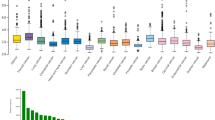Abstract
Non-synonymous single nucleotide polymorphisms (nsSNPs) represent common genomic variations that alter protein sequence and function. Some nsSNPs affecting conserved amino acids have been reported to be associated with cancer susceptibility. Interestingly, Epidermal Growth Factor Receptor (EGFR) is commonly overexpressed and mutated in many cancers. In this study, we investigated the structural effect of three deleterious nsSNPs: rs17337451 (R962G), rs1140476 (R977C) and rs17290699 (H988P) within EGFR using computational tools. The modelled mutant dimers showed less stability than wild type EGFR dimer. Furthermore, we showed the important role of R962 and H988 residues in the EGFR dimer formation. We also report preliminary experimental data for SNP R977C suggesting that the variant C977 might confer greater risk for breast cancer. These results contribute to an improved understanding of the EGFR dimer stability and provide new elements for understanding the relationship between EGFR and cancer.


Similar content being viewed by others
Abbreviations
- EGFR:
-
Epidermal growth factor receptor
- RTK:
-
Receptor tyrosine kinase
- SNP:
-
Single nucleotide polymorphism
References
Schlessinger J (2000) Cell 103:211–225
Herbst RS (2004) Int J Radiat Oncol Biol Phys 59:21–26
Burgess AW (2008) Growth factors 21:1–14
Aifa S, Rebaï A (2008) Recent Pat Biotechnol 2:181–187
Prenzel N, Fischer OM, Streit S, Hart S, Ullrich A (2001) Endocr Relat Cancer 8:11–31
Stamos J, Sliwkowski MX, Eigenbrot C (2002) J Biol Chem 277:46265–46272
Zhang X, Gureasko J, Shen K, Cole PA, Kuriyan J (2006) Cell 125:1137–1149
Aifa S, Miled N, Frikha F, Aniba MR, Svensson S, Rebaï A (2006) Proteins 62:1036–1043
Baselga J (2002) Oncologist 7:2–8
Choura M, Rebaï A (2009) J Recept Signal Transduct Res 29:286–291
Capriotti E, Fariselli P, Casadio R (2005) Nucleic Acids Res 33:W306–W310
Santiago V, Giorgio C, Stefano M (2008) Curr Top Med Chem 18:1555–1572
Laskowski RA, MacArthur MW, Moss DS, Thornton JM (1993) J Appl Crystallogr 26:283–291
Kharrat N, Al’Fadhli S, Rebaï A (2008) J Recept Signal Transduct Res 28:475–483
Acknowledgments
This work was supported by the Ministry of Higher education, Scientific Research, and Technology, Tunisia.
Author information
Authors and Affiliations
Corresponding author
Rights and permissions
About this article
Cite this article
Choura, M., Frikha, F., Kharrat, N. et al. Investigating the Function of Three Non-Synonymous SNPs in EGFR Gene: Structural Modelling and Association With Breast Cancer. Protein J 29, 50–54 (2010). https://doi.org/10.1007/s10930-009-9221-0
Published:
Issue Date:
DOI: https://doi.org/10.1007/s10930-009-9221-0



